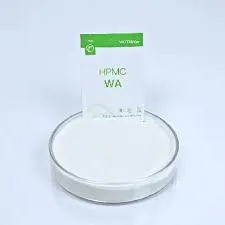
Nov . 12, 2024 01:54 Back to list
cement bonding additive
Understanding Cement Bonding Additives Enhancing Durability and Performance
Cement bonding additives play a critical role in the construction industry, enhancing the performance and durability of cement-based materials. These additives are specially formulated to improve the adhesive properties of cement mixtures, thus ensuring that they bond effectively with various substrates and withstand the rigors of environmental and mechanical stress.
What are Cement Bonding Additives?
Cement bonding additives are chemical substances added to cement before mixing. Their primary purpose is to enhance the bond strength between cement and other materials, such as concrete, masonry, gypsum, or wood. They are typically used in various applications, including construction, repair, and restoration projects. These additives can be in liquid, powder, or granular form and can vary in composition based on the specific requirements of the project.
Types of Cement Bonding Additives
There are several types of cement bonding additives, each serving distinct functions
1. Polymer-based Additives These are among the most common types of bonding agents. They improve the flexibility, adhesion, and strength of the cement mix. Polymers such as latex emulsions can be mixed with cement to create a more elastic and durable bond. 2. Chemical Admixtures These additives modify the chemical properties of the cement. For instance, superplasticizers reduce the water-cement ratio, leading to increased strength and workability. Other chemical agents can accelerate setting time or slow it down, depending on the needs of the project.
3. Micro-silica and Silica Fume These materials are used to enhance the long-term strength and durability of cement. They fill the voids in the cement matrix, leading to denser concrete with improved bonding characteristics.
4. Fiber Reinforcements Incorporating fibers—such as glass, steel, or synthetic fibers—into the cement mix adds tensile strength and reduces cracking.
Benefits of Using Cement Bonding Additives
The application of cement bonding additives offers numerous advantages
1. Improved Adhesion These additives significantly enhance the bond strength between different materials, minimizing the risk of delamination and ensuring structural integrity.
cement bonding additive

2. Enhanced Durability By improving the overall performance of cement, these additives can increase the lifespan of structures, making them more resistant to environmental factors such as moisture, temperature fluctuations, and chemical attacks.
4. Versatility Cement bonding additives can be used in various applications, from residential construction to large-scale infrastructure projects. They can be tailored to suit specific project requirements, such as rapid setting times or enhanced workability.
5. Cost-Effectiveness Although there may be an initial cost associated with purchasing bonding additives, they can lead to significant long-term savings by reducing maintenance and repair costs due to improved durability.
Application Techniques
To achieve the best results with cement bonding additives, proper application techniques are essential
1. Surface Preparation Surfaces must be clean, free of debris, oil, or dust to ensure maximum adhesion. Roughening the surface can also help improve the bond.
2. Mixing Ratios Adhering to recommended mixing ratios is crucial for optimal performance. Over- or under-using additives can lead to subpar results.
3. Curing Practices Following appropriate curing methods post-application is vital to achieving the full benefits of the bonding additives. This includes maintaining adequate moisture levels and temperature conditions.
Conclusion
Cement bonding additives represent a crucial advancement in construction technology, providing enhanced adhesion, durability, and overall performance of cement-based materials. Their use not only optimizes construction processes but also contributes to the longevity and sustainability of infrastructure. As the construction industry continues to evolve, the role of these additives in ensuring high-quality, durable structures cannot be overstated. Whether in residential, commercial, or industrial applications, understanding and effectively utilizing cement bonding additives will remain an essential practice for builders and contractors alike.
-
Versatile Hpmc Uses in Different Industries
NewsJun.19,2025
-
Redispersible Powder's Role in Enhancing Durability of Construction Products
NewsJun.19,2025
-
Hydroxyethyl Cellulose Applications Driving Green Industrial Processes
NewsJun.19,2025
-
Exploring Different Redispersible Polymer Powder
NewsJun.19,2025
-
Choosing the Right Mortar Bonding Agent
NewsJun.19,2025
-
Applications and Significance of China Hpmc in Modern Industries
NewsJun.19,2025







